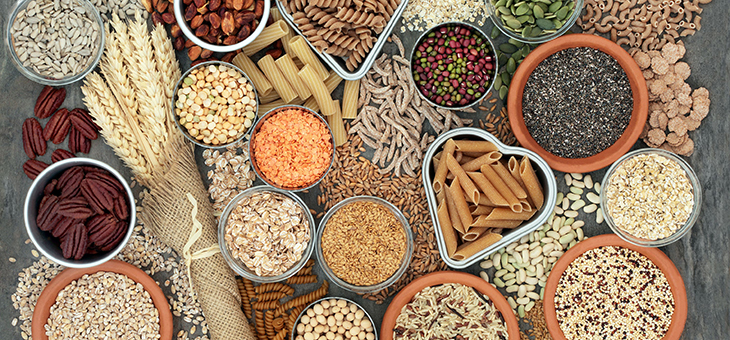We often take a long, hard look at our diets at the start of the year and try to make sure we’re eating as healthily as possible.
However, there’s one thing you’re probably not paying enough attention to – and that’s fibre.
But a new study has concluded that eating wholegrain foods that contain dietary fibre could reduce the risk of contracting a whole range of deadly diseases, including diabetes, cancer and heart disease.
Experts from the University of Otago, in New Zealand, looked at clinical trials and studies conducted over the past 40 years, involving more than a million people. Their findings, published in The Lancet, are startling.
For every 1000 participants in the 243 studies and trials, the impact of a higher fibre intake translates into 13 fewer deaths and six fewer cases of coronary heart disease when compared to those consuming lower fibre diets.
Dr Andrew Reynolds, lead author of the study, said: “Our research indicates we should have at least 25 to 29 grams of fibre from foods daily, although most of us consume less than 20 grams of fibre daily.”
So, how can you boost your fibre intake and hit that target? Here are six easy tips to follow.
1. Make wholemeal swaps
Instead of eating white bread, swap it for wholemeal, or replace your normal white rice with brown. The wholemeal versions of these foods have far more fibre in them, and are less processed so healthier for you.
Two thick slices of wholemeal bread contain an impressive 6.5g of fibre, and one cup of brown rice has 3.5g of fibre compared to just 0.6g in white – so it’s really a no-brainer which you should choose.
The good thing about this tip is you don’t have to miss out on any of your favourite meals or snacks – you just need to make a simple swap and your fibre intake will shoot up.
2. Add more beans and pulses to your meals
Pulses really are tiny powerhouses – they’re relatively cheap and full of protein, vitamins, minerals and yes, fibre. If you want to increase the fibre in your diet, you could do much worse than sneak some lentils, chickpeas and beans such as kidney, butter, cannellini and broad into your meals.
Again, this needn’t involve a major overhaul to your day-to-day life. Instead, just look for easy ways you can slot them in – for example, next time you’re making a curry add some lentils, or when you eat a salad, sprinkle some chickpeas on top.
3. Keep the skins on
This tip will make your life easier as it will rid you of a particularly tiresome task in the kitchen – peeling veg. Next time you have potatoes, leave the skins on for most of their fibre is found in the skin.
A jacket potato with the skin on contains 2.6g of fibre. Pop baked beans on top (go for the reduced-salt and reduced sugar kind to be healthy) and that clocks up another 9.8g of fibre – meaning you will be well on your way to smashing the target.
4. Snack on more fruit
Eating your five a day has a whole range of benefits, but did you know how important it is for your fibre intake? Fruits such as apples, bananas and oranges have 3-4g of fibre in them. Just make sure you eat the apple peel – like potatoes, that’s where the majority of the good stuff is found.
Fruit is great, but don’t forget veg as well. Carrots, for instance are fibre-rich – dip some sticks in hummus for the perfect afternoon snack.
5. Mix up your breakfast
Breakfast is the ideal time to think about your fibre intake. As it keeps you fuller for longer, it will help set you up for the day ahead and prevent the 11 o’clock munchies.
Look for cereals with wholegrains that aren’t packed full of sugar. Weet-Bix is a good option, or you could even rustle up a warming bowl of porridge oats. Adding fruit on top will give you even more bang for your buck.
6. Add flaxseed
Sprinkling flaxseed onto your breakfast cereal or over a salad is another easy way to up your daily intake. It’s increasingly being touted as a superfood – just one tablespoon of it contains nearly 2g of fibre, making it an ideal ingredient to have in your cupboard.
Do you calculate how much fibre you get each day? Where do you get the majority of your fibre?
– With PA
If you enjoy our content, don’t keep it to yourself. Share our free eNews with your friends and encourage them to sign up.
Related articles:
https://www.yourlifechoices.com.au/health/fibre-improves-life-expectancy-studies
https://www.yourlifechoices.com.au/health/wellbeing/nutrition/making-healthy-eating-more-affordable
https://www.yourlifechoices.com.au/food-recipes/food/healthy-and-affordable-breakfast-swaps

